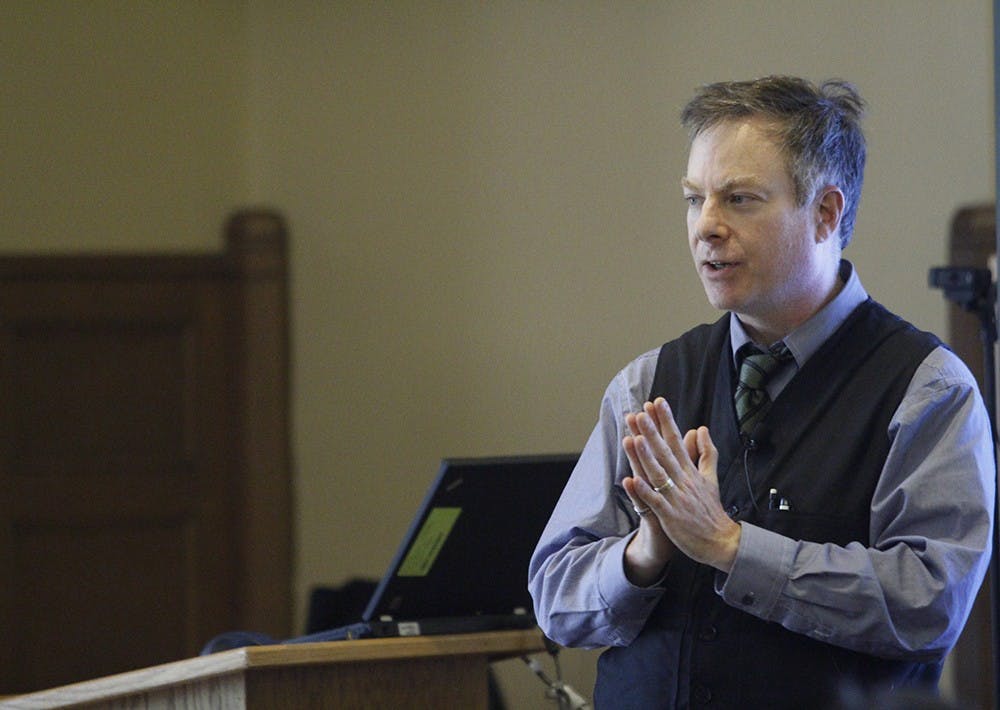Wendell Piez, an independent consultant specializing in electronic publishing technologies, broke down the 200-year-old novel as part of a lecture, displaying the structural system he created to show the different layers of the novel.
This lecture was the final event of the semester from the Catapult Center for Digital Humanities and Computational Analysis of Texts.
Piez received his doctorate in English with a focus on Romantic and Victorian literature from Rutgers University, and he explained his interest in the breakdown of ?literary texts.
Within the novel Piez analyzed, he identified the area where two narratives connected to show the two stories intertwining.
“Within the framing ?narrative, there is talk about the creation of the internal narrative,” Piez said.
Audience members were encouraged to bring printed or electronic copies of the novel with them to the lecture to show the differences of external structure varying from volumes in the earliest editions to a variety of chapter separations as the ?editions aged.
Referring to the first edition of the novel. Piez said it was broken up into three volumes, indicating the narrator of the plot at that specific time. As time went on, however, the volumes disappeared and chapters were formed into 24 sections, Piez said.
“This structure shows that there was intention with the separation,” Piez said.
Piez showed the audience members certain ends of chapters to show the aligned, plot-related intentions. As a volume breaks, Piez said, a critical point in the novel ?is exposed.
Piez explained that each word and line on each page was intentional in the structure of the novel. The number of words and lines aligned in the correct order allowed the section where the creature, the character of Frankenstein’s creation gone wrong, narrates the novel.
This is a subtle way, Piez said, to make the monster the true focus of the story.
Creating a series of overlapping bubbles, Piez formatted an Extensible Markup Language, allowing a visual display of the relationship ?of sections.
This structure was displayed on a series of poems and psalms along with “Frankenstein” to show variety in the program’s ability.
“Various texts demonstrate some functionality supported by this displayed ?structure,” Piez said.
A difficulty that arose in the development of this display mechanism was the size of the amount of text. Although “Frankenstein” is considered a relatively short novel, it is not comparable to a three-line poem, Piez said.
Larger elements lose hierarchy when smaller elements become plentiful, he said.
Looking to the future of his creation, Piez said he hopes to add ability in decoding indirect discourse within the novel. Being able to break down the sections of the external structure in addition to particular character dialog would bring even more insight to scholars and visionaries, ?Piez said.
A great number and variety of interesting questions come up when the writing is broken down, relating not only to this text but to the modeling, description and representation of literary texts in general and how current text encoding technologies serve to do this, Piez said.
“Both the plot and structure of ‘Frankenstein’ bring interesting phenomena that lead to discussion,” Piez said.






